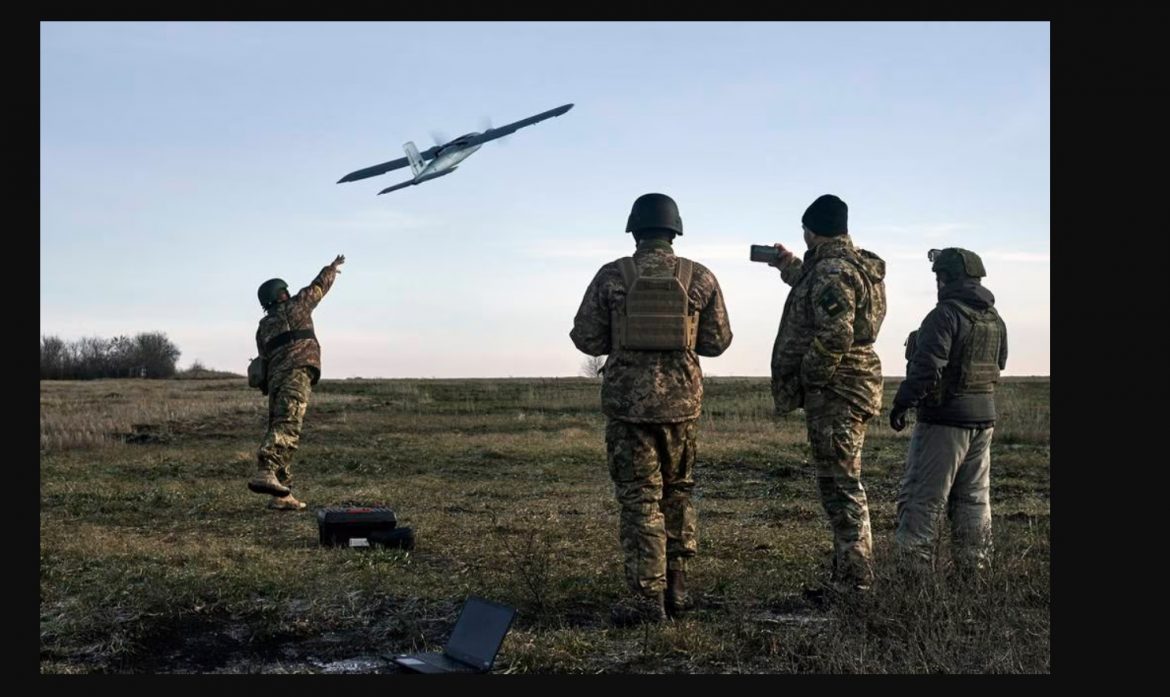The unmanned aerial threat may elude detection, but when it strikes, the only recourse is swift and efficient concealment. “Major,” a 25-year-old UAV operator stationed near the volatile frontlines in Zaporizhia province, is emphatic that the odds aren’t in one’s favor once an adversary’s drone locks onto its target. These stealthy drones can approach from behind friendly lines, often mimicking their own forces. Despite subpar onboard cameras, they can reach speeds of 150-160 kilometers per hour, invariably outpacing potential targets. “If your cover is inadequate, your survival chances are slim,” Major cautions, noting that he narrowly escaped pursuit on four occasions, most recently in mid-October. Unfortunately, two of his closest comrades weren’t as fortunate. “It’s not physics, but divine intervention that decides your fate,” he remarks.
Interestingly, the hunters have now become the hunted. Most drone controllers leave electronic traces, enabling adversaries to pinpoint their location. “Hummer,” a commander in the 47th brigade operating in the southern theater, discloses that the moment a target is identified, the Russians unleash their full arsenal, deploying their own combat drones, high-precision artillery, mines, glide bombs, and occasionally, saboteur groups. Major laments that he’s lost 15% of his fellow operators in recent months. While Hummer acknowledges a lower figure, he refrains from providing specific details.
Ukraine stands at the forefront of first-person-view (FPV) drone technology. These drones are piloted in a video game-like manner by operators wearing goggles, allowing for real-time maneuverability. Despite costing only a few hundred dollars to construct, these drones can deliver explosives capable of incapacitating or destroying equipment valued in the millions. In a single day, an operator can neutralize a dozen high-value assets, resulting in corresponding human casualties. This has elevated the status of a drone pilot to a target more valuable than a sniper, according to one front-line commander. “Many individuals aspire to be drone pilots, thinking it’s a safer, more distant role. In reality, it’s a perilous job to operate battlefield drones.”
The first FPV drones made their appearance in eastern Ukraine during the spring as a response to limited supplies of Western munitions and the superior capabilities of the adversary. These drones have played a pivotal role in undermining Russian firepower as part of Ukraine’s southern counteroffensive in the Zaporizhia region. While Ukraine initially enjoyed dominance in this new class of drones, the Russians are rapidly catching up, with their first FPV drones appearing by July, now harassing Ukrainian units along the front. Ukraine faces challenges due to the fact that its drones are largely assembled and funded by volunteers, resulting in anarchic command structures where freelance drone operators, brigade drones, and intelligence services operate in overlapping spheres. In contrast, Russia boasts clear superiority in more expensive drone categories, particularly high-powered reconnaissance machines.
The small FPV battlefield drones have disrupted established rules of warfare. “The future is already upon us,” remarks “Genius,” a deputy battalion commander in the 47th brigade. In mid-October, a Ukrainian pilot set a record by incapacitating a Russian tank from a distance of 22 kilometers, well beyond the front line. His commander mentions that the Russians have imposed a 10-kilometer no-tank zone behind the front, significantly diminishing the value of such weaponry. Hummer states that his forces have a 58% success rate in hitting targets, but Ukrainian losses are substantial too. Russian FPV drones have successfully destroyed several Bradley Fighting Vehicles, each valued at approximately $2 million, and even a Leopard tank.
Russian forces are quick learners, adapting from their own experiences and studying Ukrainian tactics. Earlier in the summer, some units started equipping higher-value assets such as tanks and artillery with jamming devices, creating high-energy fields around these objects to disrupt electronic signals. Attacking such equipment without video feedback has become a challenging, if not impossible task. Ukrainian units currently lack this technology. “FPV drones have completely revolutionized armored infantry battle tactics, and we must adapt accordingly,” says Yuriy Momot, deputy general director of a company developing technology-jamming countermeasures for Ukraine. “Previously, only brigades considered electronic warfare. Now, company-level units need equipment that can detect and defend against FPV drones.”
Operating without any electronic protection just a few hundred yards from Robotyne, the central point of the Ukrainian counteroffensive, Major insists that intuition is the only asset in this intense conflict. The battle shows no signs of abating, even as Ukraine’s advance south has slowed to a crawl. “Left Handed,” an infantryman fighting on the front lines, reports that Ukrainian casualties have surged, partly due to the menace of drones. He paints a grim picture of the plains of Zaporizhia, describing them as a nightmarish landscape filled with corpses, the stench of death, blood, and fear. Those in units like his face daunting odds of survival, with “seventy-thirty” odds, and some may not even live to see their first battle.




